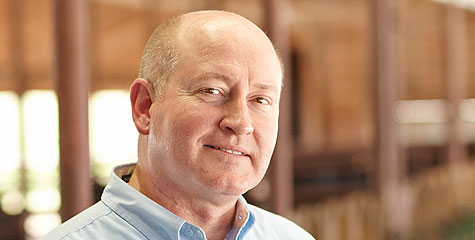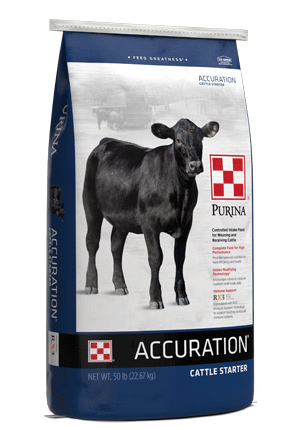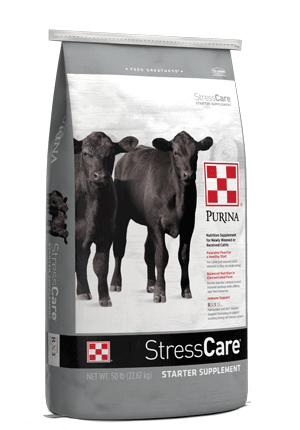
Feeding Weaned Calves to Tackle Respiratory Challenges
Management : Weaned Calf
Management : Replacement
Nutrition : Supplements
Respiratory challenges come with a hefty price tag, but there’s an innovative solution to help tackle those calf health challenges head on when weaning calves.
Calf health challenges are costly and widespread. And despite improving vaccinations, management practices and genetics, USDA feedlot data shows respiratory challenges aren’t decreasing.
One in five head1 is affected by respiratory challenges costing the beef industry about $1 billion annually2,3. It’s a staggering economic loss, but overcoming it starts at the producer level.
What can you do to join in the fight against respiratory challenges? Start by monitoring calf health and the impact of respiratory challenges on your operation.
And guess what? Health-challenged calves don't catch up. If the days spent feeding weaned calves is equal, you’ve lost 45 pounds of out-weight compared to a healthy calf.
Based on a $1.20 per cwt market price, that’s $54 of lost profit per calf. Add an extra $30 for time and money to doctor the calf,4 and each respiratory-challenged calf can cost approximately $90.
However, there’s more to the story. Respiratory challenges at weaning can lead to longer-term consequences that often go unnoticed.
A first-calf heifer that is playing catch-up on body condition will have a hard time getting bred back. If she does breed back, it will probably be later in the breeding season. And, the later she gets bred, the further she will fall behind in subsequent breeding seasons.
Additionally, producers who retain ownership could miss out on profit for every respiratory-challenged calf they send to the feedlot.
Cattle never diagnosed with respiratory challenges have heavier carcasses and more muscle on the rail, meaning a more valuable carcass.5 But even if you don’t retain ownership, calf health status affects your reputation.
Healthy cattle build a positive reputation with cattle buyers. A good reputation can result in better prices and less time spent marketing.
Proactive strategies when weaning calves and innovative feed technology can make having more healthy calves a reality.
When weaning calves, they face many barriers to health while their immune system is at its most vulnerable. Even the best calf health management can be infiltrated by respiratory challenges.
The good news? There’s an innovative weapon in the fight against weaning time stressors and respiratory challenges.
RX3® Immune Support Technology is a precise combination of prebiotics, probiotics and plant extracts exclusively available in Purina® Precon® Complete and Purina® Accuration® Starter feeds, and Purina® Stress Care® Supplement feeds.
Feeding weaned calves Purina® starters with RX3® Immune Support Technology does more than provide high-quality nutrition. Our research shows the technology primes a calf’s immune system, so it can better recognize respiratory challenges and bounce back quickly.
Keeping calves healthy means less time and money invested in reacting to respiratory challenges, putting more potential dollars back in producers’ pockets.
Feeding weaned calves? Find out if your calf nutrition program stacks up with a Proof Pays trial.
1 Brooks KR, Raper KC, Ward CE, Holland BP, Krehbiel CR, Step DL. Economic effects of bovine respiratory disease on feedlot cattle during backgrounding and finishing phases. Stillwater (OK): Oklahoma State University. Report No.: P-1027. Accessed May 5, 2017. Available from: http://pods.dasnr.o -kstate.edu/docushare/dsweb/Get/Document-6830/P-1027 Economic Effect of BRD1.pdf.
Calf health challenges are costly and widespread. And despite improving vaccinations, management practices and genetics, USDA feedlot data shows respiratory challenges aren’t decreasing.
One in five head1 is affected by respiratory challenges costing the beef industry about $1 billion annually2,3. It’s a staggering economic loss, but overcoming it starts at the producer level.
What can you do to join in the fight against respiratory challenges? Start by monitoring calf health and the impact of respiratory challenges on your operation.
Poor calf health can lead to a hefty price tag
Studies show a respiratory challenge could cut a calf’s rate of gain in half for 30 days or more. Assuming healthy calves gain around 3 pounds per day, that’s 45 potential pounds lost per calf.And guess what? Health-challenged calves don't catch up. If the days spent feeding weaned calves is equal, you’ve lost 45 pounds of out-weight compared to a healthy calf.
Based on a $1.20 per cwt market price, that’s $54 of lost profit per calf. Add an extra $30 for time and money to doctor the calf,4 and each respiratory-challenged calf can cost approximately $90.
However, there’s more to the story. Respiratory challenges at weaning can lead to longer-term consequences that often go unnoticed.
Overlooked consequences
Following the same math, if a respiratory challenged heifer gets bred the first time, she’ll calve 45 pounds lighter than her contemporaries. And she’s still growing, so it takes more for her to catch up body condition post-calving.A first-calf heifer that is playing catch-up on body condition will have a hard time getting bred back. If she does breed back, it will probably be later in the breeding season. And, the later she gets bred, the further she will fall behind in subsequent breeding seasons.
Additionally, producers who retain ownership could miss out on profit for every respiratory-challenged calf they send to the feedlot.
Cattle never diagnosed with respiratory challenges have heavier carcasses and more muscle on the rail, meaning a more valuable carcass.5 But even if you don’t retain ownership, calf health status affects your reputation.
Healthy cattle build a positive reputation with cattle buyers. A good reputation can result in better prices and less time spent marketing.
Proactive strategies when weaning calves and innovative feed technology can make having more healthy calves a reality.
Feeding weaned calves for a strong start
Keeping calves healthy begins well before weaning. It starts with proper sanitation, vaccination, weaning calves using low-stress methods and feeding weaned calves proper nutrition.When weaning calves, they face many barriers to health while their immune system is at its most vulnerable. Even the best calf health management can be infiltrated by respiratory challenges.
The good news? There’s an innovative weapon in the fight against weaning time stressors and respiratory challenges.
RX3® Immune Support Technology is a precise combination of prebiotics, probiotics and plant extracts exclusively available in Purina® Precon® Complete and Purina® Accuration® Starter feeds, and Purina® Stress Care® Supplement feeds.
Feeding weaned calves Purina® starters with RX3® Immune Support Technology does more than provide high-quality nutrition. Our research shows the technology primes a calf’s immune system, so it can better recognize respiratory challenges and bounce back quickly.
Keeping calves healthy means less time and money invested in reacting to respiratory challenges, putting more potential dollars back in producers’ pockets.
Feeding weaned calves? Find out if your calf nutrition program stacks up with a Proof Pays trial.
1 Brooks KR, Raper KC, Ward CE, Holland BP, Krehbiel CR, Step DL. Economic effects of bovine respiratory disease on feedlot cattle during backgrounding and finishing phases. Stillwater (OK): Oklahoma State University. Report No.: P-1027. Accessed May 5, 2017. Available from: http://pods.dasnr.o -kstate.edu/docushare/dsweb/Get/Document-6830/P-1027 Economic Effect of BRD1.pdf.
2 Brodersen BW. Bovine respiratory syncytial virus. Vet Clin North Am Food Anim Pract. 2010;26(2):323-333.
3 Griffin D, Chengappa MM, Kuszak J, McVey DS. Bacterial pathogens of the bovine respiratory disease complex. Vet Clin North Am Food Anim Pract. 2010;26(2):381-394.
4 Assumes a $25 medication cost and $5 labor cost (average hourly wage of $15 and around 20 minutes per calf).
5 Schneider MJ, Tait RG, Busby WD, Reecy JM. An evaluation of bovine respiratory disease complex in feedlot cattle: impact on performance and carcass traits using treatment records and lung lesion scores. J. Anim. Sci. 2009;87:1821-1827.



